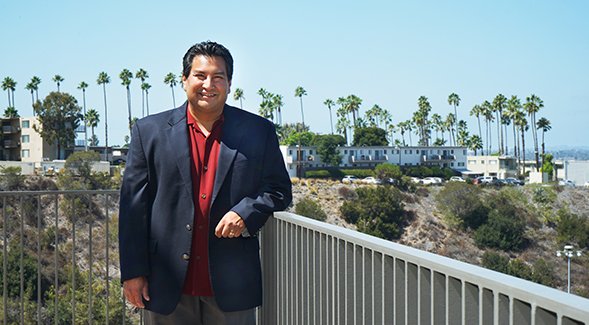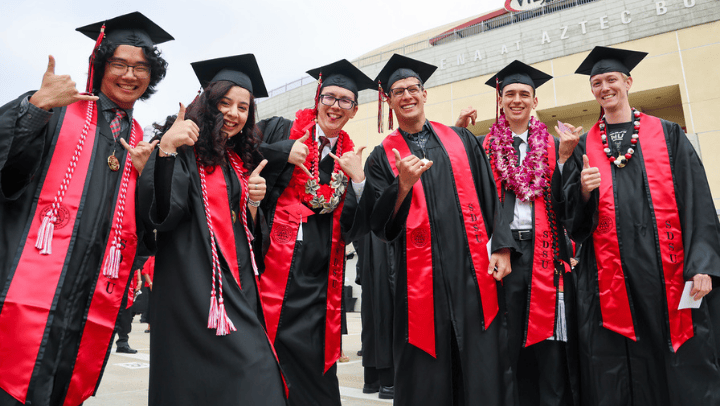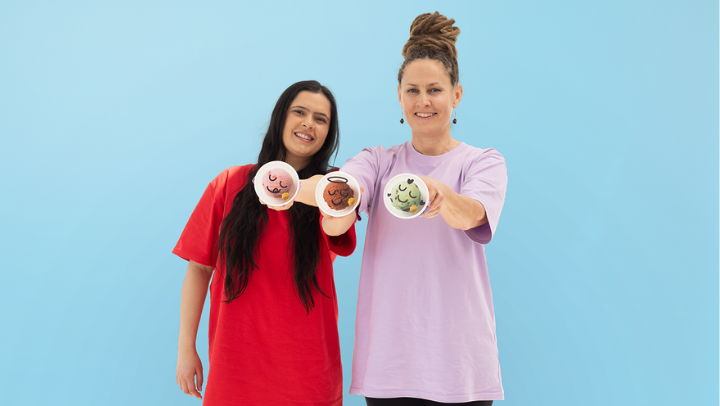American Indian Recruitment Programs Foster College Success
A Q&A with director Dwight K. Lomayesva on the programs history and goals.

“This agreement provides us a more permanent presence on campus, allowing us to better serve our students and provide them more resources with our on-campus partners.”
In 1993, two Native students at San Diego State University sought to improve lagging national averages for high school graduation, college admittance, college attendance and university graduation among Native students in the southern California region.
That year, Dwight K. Lomayesva and Devon Reed Lomayesva created American Indian Recruitment (AIR) Programs. Since then, the organization has worked in collaboration with the Department of American Indian Studies to mentor Native middle school, high school and college students in order to help them achieve college success. Education on A-G requirements, college admissions, financial aid and post-college admission support and guidance are all part of this success.
On May 7, 2021, SDSU and AIR signed a memorandum of understanding (MOU) to formalize the partnership. The collaboration aims to further the success of Native American youth seeking to pursue degrees at and beyond SDSU.
Dedicated to helping students complete high school, AIR Programs offer supplemental educational instruction through tutoring, mentoring and various cultural and educational activities in partnership with Tribal education centers, high school campuses and other Native organizations designed to achieve success within high school and higher education. It also offers tutoring and other opportunities at SDSU to help students acclimate to the university environment.
NewsCenter spoke with Lomayesva, AIR Programs director, about the history of the offerings and what the MOU will mean moving forward.
How did the AIR Programs and the collaboration with SDSU get started?
Originally, we were students when we developed our after school-based program with assistance from the former American Indian Studies Department chair, Linda Parker, in 1993. We would bring Native youth onto campus for about 10 meetings, giving them tutorial and Native content-based projects while acclimating them onto the university setting. We would gather SDSU mentors to assist our youth in tutoring and mentoring. We have expanded a little since then but our basic ideals of mentoring remain. So, our collaboration with SDSU has been for over 28 years.
What has been the greatest highlight for you from this relationship?
There have been a lot of firsts in our program: having our first students attend a major university, having our first grant, being recognized for our work in Indian Country, even having a former student become a board member (a student in the ’90s), but a continuing highlight are our students being accepted to SDSU. We had two students from our program start at SDSU in fall 21 and other students went to Columbia, UCLA, Dartmouth and other universities. This year has been especially great for me as my daughter is now entering SDSU. We of course dragged her through AIR most of her life.
What is different about this new agreement from your previous relationship?
In Indian Country, we develop our programs because there is great need. We accomplish our work with little fanfare and mainly concentrate our efforts on the students. Our work together with American Indian Studies has been this way in our concentration on our Native communities, with an informal understanding of our work together. Having a formal process is special, after our 28 years of work together. This agreement now provides us a presence on campus that is more permanent and consistent, allowing us to better serve our students and provide them more resources with our on-campus partners.
Where is your new office space at SDSU?
We have moved from Adams Humanities to PSFA 100, where we can further develop and expand our new programs that will assist our Native communities through mentoring, our juvenile justice project, and existing after school and tutorial programs. The Native Resource Center can be found at Arts and Letters 202 and our peer mentoring center will be close to our partners who share a similar mission.
Is there anything else that will be important to share with the SDSU community?
Having our own center on campus close to the Native Resource Center will enable AIR to further develop resources and be in a position to create new partnerships to serve Native youth and our local Tribal communities. Our students enter the universities with varying interests and we hope that we can build upon our partnerships with other departments and programs on campus. We are deeply thankful to the SDSU Office of the President, the Department of American Indian Studies and the Native students who have volunteered throughout these many years. We have created great change in our communities and we recognize that it was many people with the care and dedication that have accomplished this. Finally, we thank the late Dr. Linda Parker (former SDSU American Indian Studies Department Chair) for her belief in all of us to create change.



